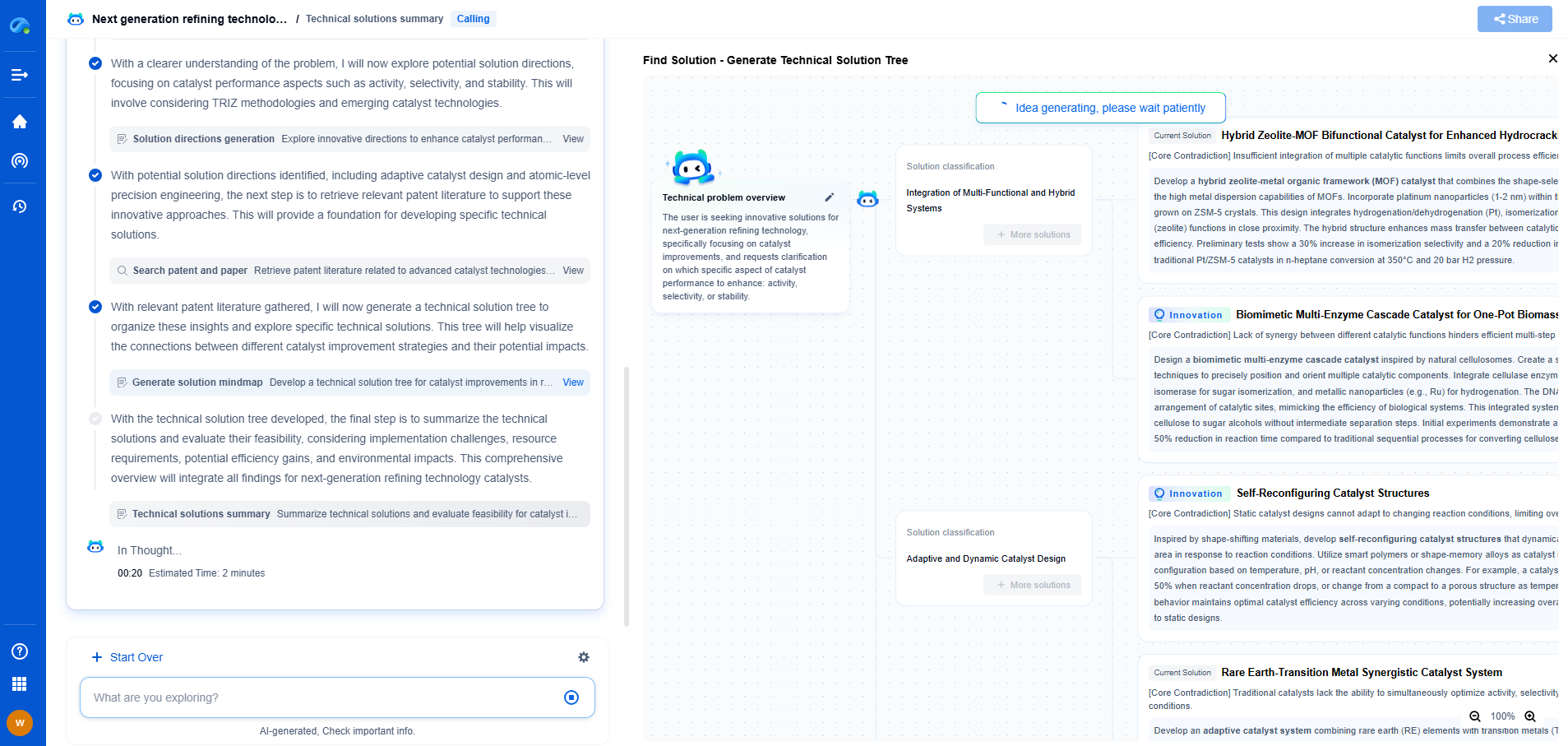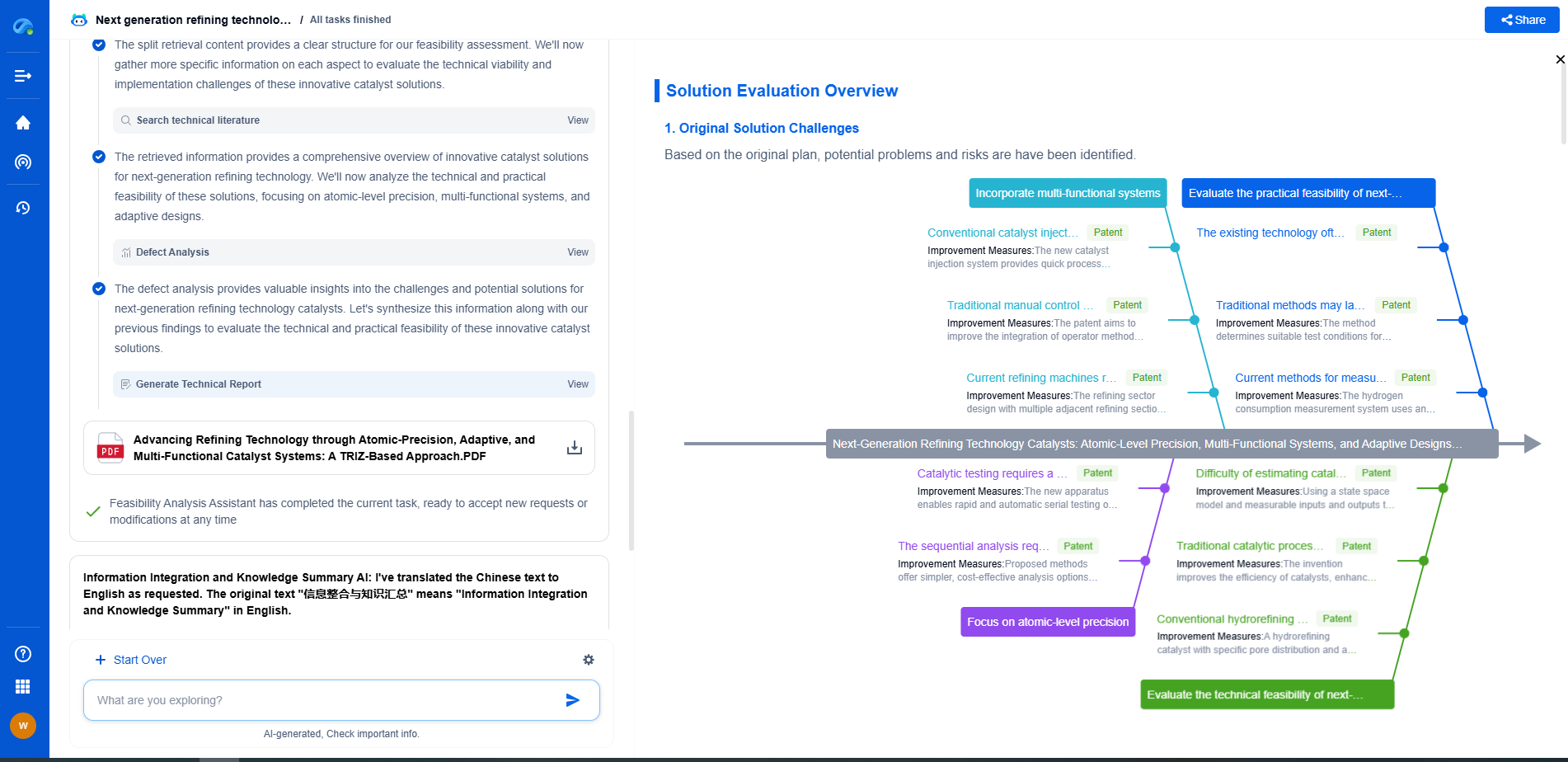What is robotic pick-and-place?
JUN 26, 2025 |
Robotic pick-and-place systems are an innovative solution transforming industries by automating the process of picking up objects and placing them in designated locations. These systems employ robotic arms equipped with specialized tools and sensors to perform tasks with precision and speed, replacing or complementing manual labor. As we delve into the workings of robotic pick-and-place technology, we uncover its applications, benefits, and future potential.
How Robotic Pick-and-Place Works
Robotic pick-and-place systems are designed to mimic the repetitive movements of human workers in various industrial settings. The system typically consists of a robotic arm, end-effector or gripper, sensors, and a control system. The robotic arm is programmed to move along multiple axes, allowing it to reach, grasp, and relocate items accurately. The gripper is tailored to the objects being handled, whether they are delicate components, bulky packages, or uniform products on an assembly line.
Sensors are crucial in providing feedback to the robotic system, enabling it to adapt to different objects and environments. Vision systems, such as cameras and laser scanners, help identify the position and orientation of items, ensuring precise handling. The control system integrates these components, orchestrating their actions according to pre-defined instructions or real-time adjustments driven by artificial intelligence.
Applications Across Industries
Robotic pick-and-place technology has found applications across a wide spectrum of industries. In manufacturing, it enhances productivity by handling tasks such as assembling parts, sorting products, and packaging items. The automotive industry uses these systems for precise assembly and material handling, streamlining the production process.
In the food and beverage sector, robotic pick-and-place systems manage delicate items like fruits and baked goods, ensuring hygiene and consistency. The electronics industry benefits from these systems in the assembly of circuit boards and handling of components, increasing accuracy and reducing waste.
E-commerce and logistics sectors also leverage robotic pick-and-place solutions to optimize warehouse operations. Robots efficiently sort, pack, and ship orders, significantly reducing the time and labor involved in order fulfillment.
Benefits of Robotic Pick-and-Place
The adoption of robotic pick-and-place systems offers several advantages. Primarily, these systems enhance efficiency by operating tirelessly for extended periods, reducing the need for breaks and shift changes associated with human labor. This leads to increased productivity and faster turnaround times.
Accuracy and consistency are other key benefits. Unlike human workers, robots can perform repetitive tasks with the same precision every time, minimizing errors and maintaining quality standards. Additionally, they can handle hazardous or strenuous tasks, ensuring worker safety and improving overall workplace conditions.
Furthermore, robotic systems offer flexibility and scalability. They can be reprogrammed or upgraded to accommodate changes in production lines or new tasks, providing long-term value to businesses. As technology advances, the cost of implementing robotic systems continues to decrease, making them accessible to smaller enterprises.
Challenges and Considerations
Despite their advantages, robotic pick-and-place systems face challenges. The initial investment can be substantial, particularly for small and medium-sized businesses. Additionally, integrating these systems into existing operations requires careful planning and expertise, potentially leading to downtime during the transition phase.
Another consideration is the need for skilled personnel to operate, maintain, and troubleshoot robotic systems. As technology evolves, ongoing training is essential to keep pace with advancements and ensure optimal performance.
The Future of Robotic Pick-and-Place
The future of robotic pick-and-place technology is promising, driven by continuous advancements in robotics, artificial intelligence, and machine learning. As these systems become more intelligent, they will be capable of handling more complex tasks, adapting to dynamic environments, and interacting seamlessly with human workers.
Collaborative robots, or cobots, are an emerging trend, designed to work alongside humans, enhancing productivity without replacing human jobs entirely. These cobots can learn from human actions, further improving their efficiency and accuracy.
In conclusion, robotic pick-and-place systems are revolutionizing industries by automating repetitive tasks, improving efficiency, and enhancing precision. As technology progresses, these systems will become more accessible and sophisticated, playing a pivotal role in the future of industrial automation.
Ready to Redefine Your Robotics R&D Workflow?
Whether you're designing next-generation robotic arms, optimizing manipulator kinematics, or mining patent data for innovation insights, Patsnap Eureka, our cutting-edge AI assistant, is built for R&D and IP professionals in high-tech industries, is built to accelerate every step of your journey.
No more getting buried in thousands of documents or wasting time on repetitive technical analysis. Our AI Agent helps R&D and IP teams in high-tech enterprises save hundreds of hours, reduce risk of oversight, and move from concept to prototype faster than ever before.
👉 Experience how AI can revolutionize your robotics innovation cycle. Explore Patsnap Eureka today and see the difference.
- R&D
- Intellectual Property
- Life Sciences
- Materials
- Tech Scout
- Unparalleled Data Quality
- Higher Quality Content
- 60% Fewer Hallucinations
Browse by: Latest US Patents, China's latest patents, Technical Efficacy Thesaurus, Application Domain, Technology Topic, Popular Technical Reports.
© 2025 PatSnap. All rights reserved.Legal|Privacy policy|Modern Slavery Act Transparency Statement|Sitemap|About US| Contact US: help@patsnap.com

